Food and community key ingredients in early County life
Administrator | Feb 20, 2024 | Comments 1
Story and photos by Sharon Harrison
For more than a century, Prince Edward County’s community hubs, in their many forms, have provided a nurturing environment as gathering places, bringing folks together (and especially women back in the day), where the key ingredient often centred around food and feeding people.
A presentation and tour Saturday afternoon at Picton United Church’s original community hall (Centennial Hall) showcased not just how it has been a foundation for food and community since it was constructed in 1899, but also showcased the building’s fascinating architectural history, and its role in the community over many years.
The grey limestone church is a prominent feature in Picton’s landscape, where its castle and turret-like tower holds prominence over the town.
Hosted by the Architectural Conservancy of Ontario (Prince Edward County branch) and Picton United Church, the free event was the first of some 20 Flashback February events this year.
The presentation included four speakers who told of the Chapel Street building’s unique architectural history, as well as providing insights and tales into the long tradition of hosting community events.
It also highlighted the important relationship people and food made in a rural community over many decades, while adapting and changing with the times.
An introduction by church member Debra Marshall provided some background on the role the Picton United Church’s kitchen has played in the community over many decades. Culinary historian Liz Driver provided some fascinating insight into the church’s cookbooks, sharing how recipes have changed and evolved and how community cookbooks were created, and why.
Described as a long-time church kitchen maven, and the “matriarch of the church’s kitchens”, Betty Laundry spent a little time in informal conversation, interacting with the audience with stories and memories, reminiscing of preparing food for community events and working in the community kitchen. She spoke to the apparent effortless endeavour of preparing food for large numbers, and noted “We had a lot of fun over the years in the kitchen, and a few mishaps, like a dropped pie.”
There have been three churches on the current site of the Picton United Church (including the current one), with the present structure having been constructed in 1899. The old, original church was built in 1820, with the second church building in 1854.
Picton United Church’s original community hall, which was also once used as a Sunday school, has been the foundation for food and community since it was first constructed. Heritage architect Edwin Rowse led attendees on a journey through the centuries of architectural history behind the remarkable seven-sided Sunday school structure, concluding with a tour of the unusual space.
Rowse noted how all three structures were built in the 19th century, and particularly notes how the radical architectural evolution during the 19th century is reflected in the buildings. The first two churches on the site were demolished simply so bigger buildings could be built, where he noted that a re-building seemed to be preferred, rather than extending the existing structures.
“What was strange was that they demolished each church and built on the exact same spot and there was discussion on whether to expand the last change, but they built new.”
He also remarked about how the architects of the time and the design and construction ensured a sense of community by bringing people together in a small space.
“The circle is very symbolic of community and togetherness and bringing a sense of enclosure, for over 125 years,” he said. “Even with almost 1,200 seats, the church has almost managed to keep the sense of intimacy of the older churches, and keeping people quite close so they form an intimate grouping in the church”.
Rowse also spoke to the Akron Plan, which he said had a great influence on the churches, and became a popular design for churches that housed Sunday school, with its characterization of of wedge-shaped classrooms that radiated from the direction of a central platform.
“The 1899, the Picton United Church now, really grew out of the Sunday school, as the Sunday school invented a form of a way of making the church more collective than the church had previously known themselves.”
He explained how the Sunday school plan of 1866 was a uniform lesson plan, and a new idea.
“The Sunday school plan was all the children would take the same lesson each week together and they would come together collectively to start the session, and then they were split into groups and taught in their own individual smaller classrooms, age appropriate, and then come back together again,” described Rowse. “It’s a lovely idea, but quite complicated.”
A tour of the unique seven-sided, two-storey former Sunday school building (which is flooded with natural light) followed the presentation, where Rowse explained that it is not known as an eight-sided building because the eighth side is internal, “a flat wall where a fireplace and chimney were once located, separating church and Sunday school”.
During the walk-through, he pointed out the walls of wainscoting and pressed metal which is still there, along with the original lathe and plaster, which is clearly worn in some places. He also noted the different perspective when the two-storey building is seen from the second storey, looking down, and around, as opposed to looking up..
“The vision of Flashback February this year is the many ways that history is written, and many uses and changes have been made to this building is in effect the architectural equivalent of written records,” he said. “Although it is no longer used as a Sunday school, it is a reminder this remarkable spatial geometry is an indicator of the whole attitude that the church brought in of a worship that is close and connected, and close to the people.”
COMMUNITY COOK BOOKS
Liz Driver spent 20 years of her life doing independent research into Canadian cookbooks, and through that research discovered how important community cookbooks were in Canada.
Canada’s very first community cookbook was the Home Cook Book, first published in 1877, and this type of publication emerged during the American Civil War, where Driver said it soon after became a phenomenon nationwide, primarily created and used to raise money for a community cause.
By 1885, more than 100,000 copies of the Home Cook Book had been sold in Canada, and women said, ‘this is a great idea, how can I do it in my own community?’.
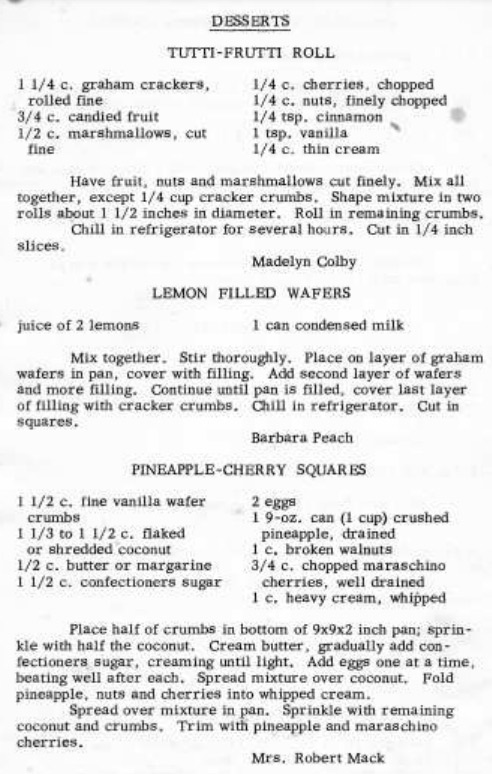 “Very soon after was our first one in Toronto to raise money for the hospital for sick children, and it was a ladies committee and it just struck a chord,” Driver explained. “And why wouldn’t it, because before that the books were made by other people in other places and those books represent what we cooked and ate.”
“Very soon after was our first one in Toronto to raise money for the hospital for sick children, and it was a ladies committee and it just struck a chord,” Driver explained. “And why wouldn’t it, because before that the books were made by other people in other places and those books represent what we cooked and ate.”
She said one thing that is very typical of these books is that each recipe will be credited to the woman who contributed it, so it’s also a guarantee of a recipe because if you are going to have a recipe in there, it’s got to be good.
“It also shows women as book creators, and this is a very sophisticated exercise, it just impresses the heck out of me, making a book.”
“They are a legacy of our food culture; they are a grassroots phenomenon and it’s really the one place you go to find out what did people cook and eat, and how did they support their community through those cookbooks,” said Driver. “Almost none of them were in regular libraries; they are actually still in the community.”
After Marshall reached out to the community for anyone who may have a community cookbook from Picton United Church, Driver says they came up with one from 1954, where Driver shared some of the recipes it contained, marvelling in the format, amused at some of the ingredients used in the day, along with noting some interesting illustrations.
“In some ways, they are just hand sketches, maybe not professional, but as we go through you will see how amusing they are and so much detail: the idea, the conceit of these illustrations, which mark each chapter, it’s like an act in a play.”
Driver walked through some of the personal recipes contained in the cookbook, noting how many come from the heart and are tried, tested and true. From pan loaf, ginger ale punch, to stovetop dressings, tomato soup cake, hot water chocolate cake, to flapper pie with a cornflake crust, to macaroon salad, tomato chop suey, and ice box cookies -with a big emphasis on cans (as it was efficient to open up a can in the 1950s) – many of the recipes are clearly dated now, yet others seem less so.
The cookbook also included a recipe for a perfect husband, “this is very useful advice and appears in a lot of these cookbooks”, she said.
“As a bibliographer, I am very much attuned how well put together this cookbook is, it has every part you’d ever want beginning with the preface, which of course thanks the women, and it wasn’t just the women of the church, they also reached out to their friends for recipes,” described Driver. “This book is a very well put together publication because it really exemplifies community.”
Marshall noted how the Picton United Church kitchen began as a Sunday school structure and catered to weddings, funeral receptions and community events, and was also home to the Picton United Church food bank, beginning in 1984.
“It grew from a closet under the stairs on the main floor into one of the Sunday School classrooms, and eventually moved to the lower level growing to about 3,000 square feet, including rooms in the basement of this hall,” said Marshall.
She noted how over the past 40 years the food bank client list has grown exponentially from a handful to hundreds, and in the last three years, the number of persons served has grown from 2,691 (in 2021), to 3,368 (in 2022), and now to 4,346 (in 2023).
“That’s a 63 per cent increase over three years.”
The structure is now home to the Victorian Order of Nurses adult day program, which provides a respite for caregivers, and activities and lunches for their clients.
“Renovations were made to provide up-to-code housing for the program, but the ‘yellow ballroom’ as it was dubbed at one point years ago, remains respectful of its heritage,” added Marshall.
Filed Under: Arts & Culture • Featured Articles • News from Everywhere Else
About the Author:



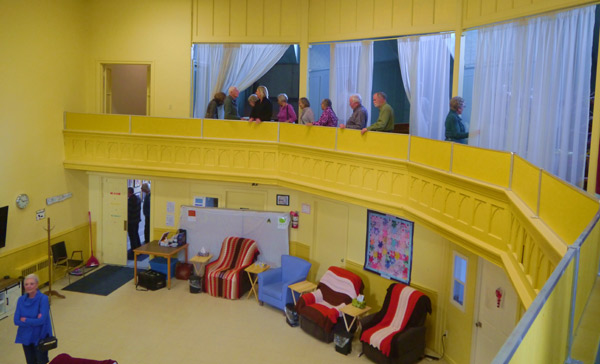
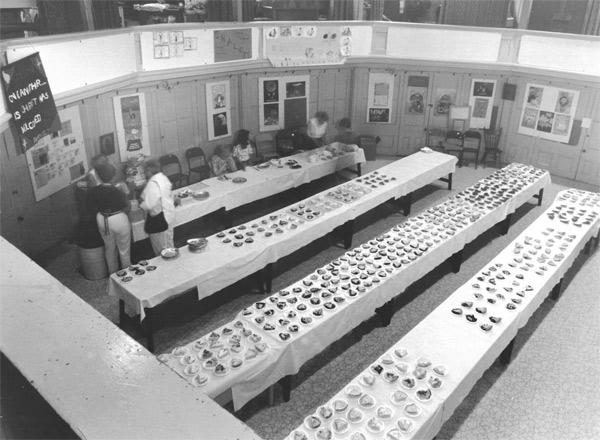
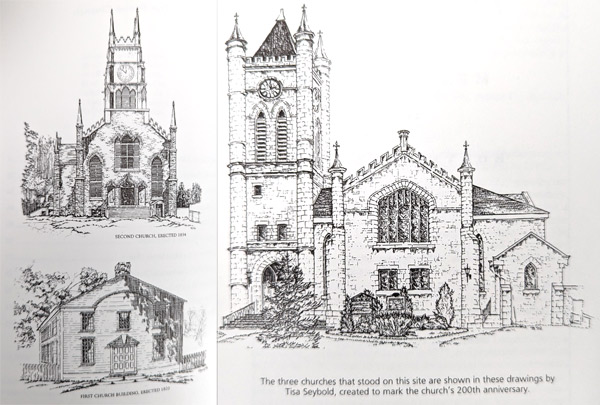
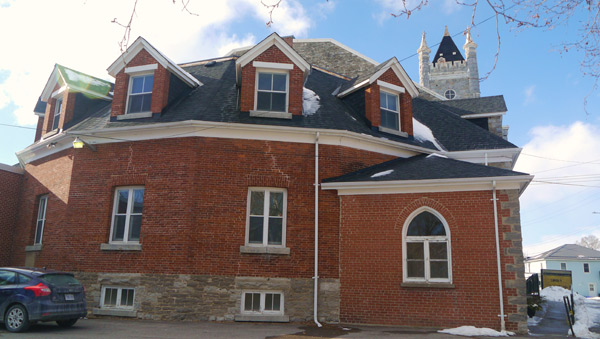
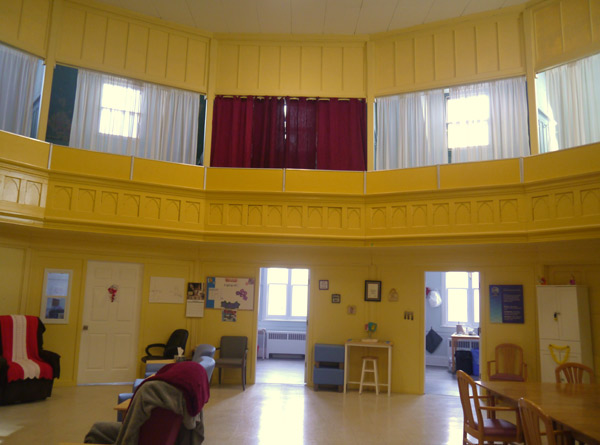
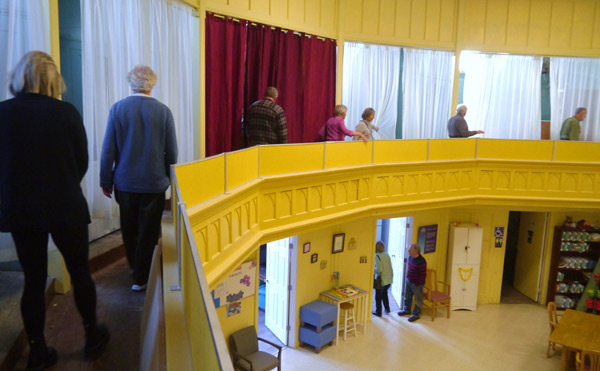
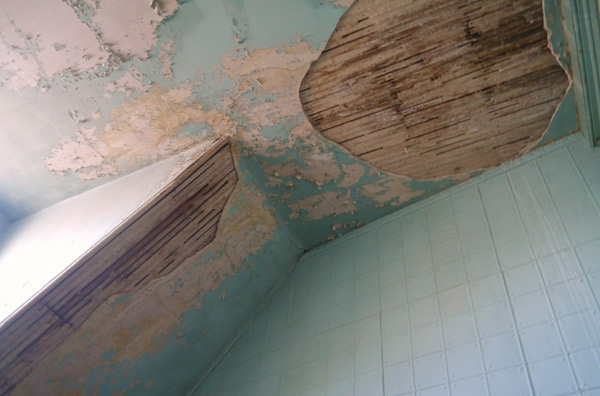
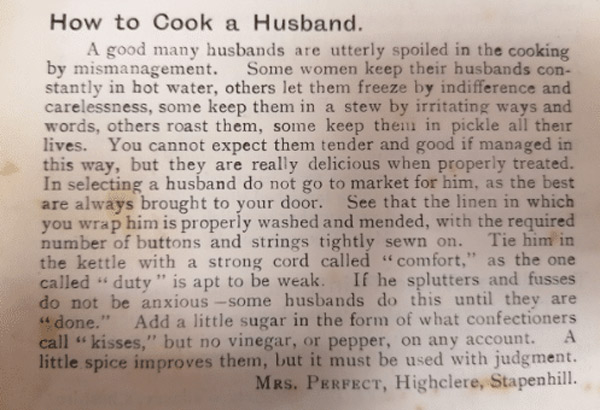






























Absolutely a joy to read about this rich history and architecture.